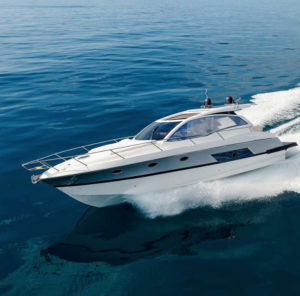In September 2022, the Liberal government against the recommendations of the boat industry in Canada implemented a luxury goods tax on boats valued over $250,000. The overall tax looks straightforward, but there are many regulations and filing information that brokers and owners should be aware of. This is just a general overview; for more information, visit the Government of Canada’s Luxury Tax page.
Luxury goods tax 101
There are many rules, subjects, and exemptions to the luxury tax bill. We will try to pare them down to the important information, but we advise that you do your own research or get the advice of a tax accountant.
The luxury tax, according to the Canada Revenue Agency, is applied on any sales or importation of boats costing more than $250,000. If a person leases out, or makes improvements to the boat that increase its value above the $250,000 threshold, the luxury boat tax could apply.
Who must register under the Select Luxury Items Tax Act?
Any manufacturer, wholesaler, or retailer, and during business you sell or import vessels (boats) priced over $250,000 is required to register with the CRA (Canada Revenue Agency).
What vessels are subject to the luxury tax?
- The luxury tax applies to boats that meet the definition of subject vessel under the Act and are priced or valued above the $250,000 price threshold unless an exemption applies.
- The vessel has a date of manufacture after 2018. Examples of subject vessels include yachts, cruisers, sailboats, deck boats, waterskiing boats, and houseboats.
- The boats in question are intended for leisure, recreation, or sport activities.
- Note that boats valued under $250,000 that have had upgrades or improvements may also be subject to the luxury tax.
What qualifies as an exemption?
- A floating home.
- A vessel designed and equipped solely for ferrying passengers or vehicles.
- A vessel designed and equipped solely for commercial fishing
- A vessel with sleeping facilities for more than 100 individuals who are not crew members.
- Refer to the Subject Vessels: Select Luxury Items Tax Act
How is the retail value determined?
- The fair market value (FMV) of the boat.
- The total amount of any transportation or freight fees for the transportation that is not already included in the FMV.
- The total amount of any duties, taxes, and fees (other than the GST/HST).
- The total amount of any provincial levy and other amounts imposed under an Act of the Legislature of a province that are payable on the subject vessel and that are not already included in the FMV.
How is the luxury boat tax calculated?

The luxury tax is calculated using the taxable value of the boat. The tax rate is 10 percent of the total price paid or 20 percent of the price on boats valued at $250,000 or more, whichever is less. Then you will also pay GST and/or HST on the retail price plus the luxury tax.
Yes, taxes on top of taxes.
Reporting and filing returns for luxury boat taxes
Registered vendors or person must report their luxury tax. Filing the luxury goods tax is like GST. The tax must be filed for each reporting period on Form B500, Luxury Tax and Information Return for Registrants. This form must be filed every reporting period even if they do not have luxury tax payable.
Of note: The first quarterly reporting period for 2023 is January through March and filing and payment are due by April 30.
Economic Impacts
 MaryKate Townsend, VP Central Canada Pacific Marine Underwriters Ltd., recommends, “Canadian Brokers who specialize in or have a pleasure craft book of business – for vessels valued at over $250,000 may want to review their revenue projections for the coming 24 months – about the time frame other countries rescinded luxury goods tax. There are many countries that have reported that luxury goods tax does not work as intended because consumers will change their behaviour to avoid a luxury goods tax, thus changing the mix of business for higher end boats.”
MaryKate Townsend, VP Central Canada Pacific Marine Underwriters Ltd., recommends, “Canadian Brokers who specialize in or have a pleasure craft book of business – for vessels valued at over $250,000 may want to review their revenue projections for the coming 24 months – about the time frame other countries rescinded luxury goods tax. There are many countries that have reported that luxury goods tax does not work as intended because consumers will change their behaviour to avoid a luxury goods tax, thus changing the mix of business for higher end boats.”
On March 13, 2023, Bill Curry of the Globe and Mail reported on a recent analysis of the Finance Department estimate that the luxury goods tax will lead to between 400 and 870 job losses. The reports said that reduced vessel sales would be between $32.7 million and $102.9 million. The numbers are in line with estimates for reduced sales projections (https://distribution-a617274656661637473.pbo-dpb.ca/03ffbeef04658a0828c035bec9ef4b2e7a4de065014f64918bc50a6afca3b043) released in May of 2022, by the Parliamentary Budget Office Yves Giroux.
A report in 2021 by economists Jack Mintz and Fred O-Riordan, commissioned by the National Marine Manufacturers Association of Canada (NMMA), estimated between 896 and 3670 job losses in the marine sector. They also reported that the tax would lead to $90.5 million in reduces vessel sales. According to Jim Wielgosz, NMMA’s interim executive director, said, “to date there are reports of millions of dollars in sales losses across Canada, just 6 months after the tax was introduced.”
Further reading for luxury boat tax
Government of Canada: Luxury Tax
Boating Industry: The luxury tax myth
Toronto Sun: Lilley, Trudeau, Freeland bring in luxury tax, saying the rich don’t pay their fair share
Boating Industry: NMMA explains the impact of Canadian luxury tax
Financial Post: Jack Mintz tax the rich won’t work
Business Examiner: Proposed luxury tax on new boats will be a job killer
Globe and Mail (Subscribers only): Finance department reports luxury tax will lead to between 400 and 870 job losses
Safe Harbour Insurance: Luxury boat tax hits the boating industry in Canada








